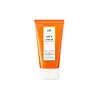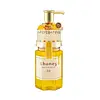What's inside
What's inside
 Key Ingredients
Key Ingredients

 Benefits
Benefits

 Concerns
Concerns

 Ingredients Side-by-side
Ingredients Side-by-side

Water
Skin ConditioningVinegar
Hydrogenated Starch Hydrolysate
HumectantPropylene Glycol
HumectantCetyl Alcohol
EmollientC13-15 Alkane
SolventPyrus Malus Fruit Extract
Skin ConditioningDimethicone
EmollientGlycerin
HumectantMyristyl Alcohol
EmollientCetearyl Alcohol
EmollientStearamidopropyl Dimethylamine
EmulsifyingVitis Vinifera Fruit Extract
Skin ConditioningRoyal Jelly Extract
Skin ConditioningPersea Gratissima Fruit Extract
EmollientHippophae Rhamnoides Fruit Extract
Skin ConditioningSaccharum Officinarum Extract
MoisturisingMelaleuca Alternifolia Leaf Extract
PerfumingOlea Europaea Fruit Extract
BleachingDaucus Carota Sativa Root Extract
Skin ConditioningPrunus Mume Fruit Extract
HumectantRubus Chamaemorus Fruit Extract
AntioxidantHibiscus Sabdariffa Flower Extract
Skin ConditioningLuffa Cylindrica Fruit Extract
Skin ConditioningActinidia Chinensis Fruit Extract
EmollientCitrus Limon Fruit Extract
MaskingAdansonia Digitata Seed Extract
Skin Conditioning1,2-Hexanediol
Skin ConditioningCamellia Japonica Seed Oil
EmollientVitis Vinifera Seed Oil
EmollientArgania Spinosa Kernel Oil
EmollientGlyceryl Stearate Se
EmulsifyingSteartrimonium Chloride
PreservativeBehentrimonium Chloride
PreservativeAminopropyl Dimethicone
Elaeis Guineensis Oil
EmollientAmodimethicone
Cetrimonium Chloride
AntimicrobialTrideceth-12
EmulsifyingIsopropyl Alcohol
SolventPhenoxyethanol
PreservativeHydrolyzed Collagen
EmollientHydrolyzed Keratin
HumectantHydrogenated Lecithin
EmulsifyingCeramide NP
Skin ConditioningLactic Acid
BufferingDisodium EDTA
Parfum
MaskingWater, Vinegar, Hydrogenated Starch Hydrolysate, Propylene Glycol, Cetyl Alcohol, C13-15 Alkane, Pyrus Malus Fruit Extract, Dimethicone, Glycerin, Myristyl Alcohol, Cetearyl Alcohol, Stearamidopropyl Dimethylamine, Vitis Vinifera Fruit Extract, Royal Jelly Extract, Persea Gratissima Fruit Extract, Hippophae Rhamnoides Fruit Extract, Saccharum Officinarum Extract, Melaleuca Alternifolia Leaf Extract, Olea Europaea Fruit Extract, Daucus Carota Sativa Root Extract, Prunus Mume Fruit Extract, Rubus Chamaemorus Fruit Extract, Hibiscus Sabdariffa Flower Extract, Luffa Cylindrica Fruit Extract, Actinidia Chinensis Fruit Extract, Citrus Limon Fruit Extract, Adansonia Digitata Seed Extract, 1,2-Hexanediol, Camellia Japonica Seed Oil, Vitis Vinifera Seed Oil, Argania Spinosa Kernel Oil, Glyceryl Stearate Se, Steartrimonium Chloride, Behentrimonium Chloride, Aminopropyl Dimethicone, Elaeis Guineensis Oil, Amodimethicone, Cetrimonium Chloride, Trideceth-12, Isopropyl Alcohol, Phenoxyethanol, Hydrolyzed Collagen, Hydrolyzed Keratin, Hydrogenated Lecithin, Ceramide NP, Lactic Acid, Disodium EDTA, Parfum
Cyclopentasiloxane
EmollientDimethicone
EmollientHydrogenated Polyisobutene
EmollientElaeis Guineensis Kernel Oil
EmollientHoney
HumectantHoney Extract
HumectantHydrolyzed Honey Protein
Skin ConditioningRosa Damascena Flower Extract
MaskingArgania Spinosa Kernel Oil
EmollientPanthenol
Skin ConditioningGluconobacter/Honey Ferment Filtrate
Skin ConditioningKeratin
Skin ConditioningRoyal Jelly Extract
Skin ConditioningPropolis Extract
Skin ConditioningC9-11 Alkyl Glucoside
CleansingHydroxypropyltrimonium Hyaluronate
Ceramide Ng
Skin ConditioningCeramide NP
Skin ConditioningCeramide AP
Skin ConditioningHydrolyzed Silk
HumectantGlycerin
HumectantTocopherol
AntioxidantQuaternium-18
Quaternium-33
Cholesterol
EmollientButylene Glycol
HumectantPropylene Glycol
HumectantPhenoxyethanol
PreservativeWater
Skin ConditioningParfum
MaskingCyclopentasiloxane, Dimethicone, Hydrogenated Polyisobutene, Elaeis Guineensis Kernel Oil, Honey, Honey Extract, Hydrolyzed Honey Protein, Rosa Damascena Flower Extract, Argania Spinosa Kernel Oil, Panthenol, Gluconobacter/Honey Ferment Filtrate, Keratin, Royal Jelly Extract, Propolis Extract, C9-11 Alkyl Glucoside, Hydroxypropyltrimonium Hyaluronate, Ceramide Ng, Ceramide NP, Ceramide AP, Hydrolyzed Silk, Glycerin, Tocopherol, Quaternium-18, Quaternium-33, Cholesterol, Butylene Glycol, Propylene Glycol, Phenoxyethanol, Water, Parfum
 Reviews
Reviews

Ingredients Explained
These ingredients are found in both products.
Ingredients higher up in an ingredient list are typically present in a larger amount.
You may know this ingredient as argan oil. Argan Oil has antioxidant, hydrating, and soothing properties.
Studies have shown argan oil can help fight again radical damage from the sun. This makes it effective at preventing hyperpigmentation.
Large amounts of vitamin E found in argan oil helps the skin retain water. Argan oil also contains fatty acids such as linoleic acid, oleic acid, and palmitic acid. It is also a good source of lipids.
Another benefit of argan oil is skin-soothing. It can help reduce inflammation-related skin symptoms.
Argan Oil is effective at regulating sebum production in pores. This can make it effective at treating hormonal acne.
Traditionally, argan oil was used for its antibacterial and antifungal properties. However, argan oil contains fatty acids that may make it not fungal-acne safe.
Argan Trees are native to Morocco.
Learn more about Argania Spinosa Kernel OilCeramide NP is a type of ceramide and formally known as ceramide 3.
Ceramides are intercellular lipids naturally found in our skin that bonds dead skin cells together to create a barrier. They are known for their ability to hold water and thus are a great ingredient for dry skin.
Ceramides are an important building block for our skin barrier. A stronger barrier helps the skin look more firm and hydrated. By bolstering the skin ceramides act as a barrier against irritating ingredients. This can help with inflammation as well.
If you would like to eat ceramides, sweet potatoes contain a small amount.
Read more about other common types of ceramides here:
Ceramide AP
Ceramide EOP
Dimethicone is a type of synthetic silicone created from natural materials such as quartz.
What it does:
Dimethicone comes in different viscosities:
Depending on the viscosity, dimethicone has different properties.
Ingredients lists don't always show which type is used, so we recommend reaching out to the brand if you have questions about the viscosity.
This ingredient is unlikely to cause irritation because it does not get absorbed into skin. However, people with silicone allergies should be careful about using this ingredient.
Note: Dimethicone may contribute to pilling. This is because it is not oil or water soluble, so pilling may occur when layered with products. When mixed with heavy oils in a formula, the outcome is also quite greasy.
Learn more about DimethiconeGlycerin is already naturally found in your skin. It helps moisturize and protect your skin.
A study from 2016 found glycerin to be more effective as a humectant than AHAs and hyaluronic acid.
As a humectant, it helps the skin stay hydrated by pulling moisture to your skin. The low molecular weight of glycerin allows it to pull moisture into the deeper layers of your skin.
Hydrated skin improves your skin barrier; Your skin barrier helps protect against irritants and bacteria.
Glycerin has also been found to have antimicrobial and antiviral properties. Due to these properties, glycerin is often used in wound and burn treatments.
In cosmetics, glycerin is usually derived from plants such as soybean or palm. However, it can also be sourced from animals, such as tallow or animal fat.
This ingredient is organic, colorless, odorless, and non-toxic.
Glycerin is the name for this ingredient in American English. British English uses Glycerol/Glycerine.
Learn more about GlycerinParfum is a catch-all term for an ingredient or more that is used to give a scent to products.
Also called "fragrance", this ingredient can be a blend of hundreds of chemicals or plant oils. This means every product with "fragrance" or "parfum" in the ingredients list is a different mixture.
For instance, Habanolide is a proprietary trade name for a specific aroma chemical. When used as a fragrance ingredient in cosmetics, most aroma chemicals fall under the broad labeling category of “FRAGRANCE” or “PARFUM” according to EU and US regulations.
The term 'parfum' or 'fragrance' is not regulated in many countries. In many cases, it is up to the brand to define this term.
For instance, many brands choose to label themselves as "fragrance-free" because they are not using synthetic fragrances. However, their products may still contain ingredients such as essential oils that are considered a fragrance by INCI standards.
One example is Calendula flower extract. Calendula is an essential oil that still imparts a scent or 'fragrance'.
Depending on the blend, the ingredients in the mixture can cause allergies and sensitivities on the skin. Some ingredients that are known EU allergens include linalool and citronellol.
Parfum can also be used to mask or cover an unpleasant scent.
The bottom line is: not all fragrances/parfum/ingredients are created equally. If you are worried about fragrances, we recommend taking a closer look at an ingredient. And of course, we always recommend speaking with a professional.
Learn more about ParfumPhenoxyethanol is a preservative that has germicide, antimicrobial, and aromatic properties. Studies show that phenoxyethanol can prevent microbial growth. By itself, it has a scent that is similar to that of a rose.
It's often used in formulations along with Caprylyl Glycol to preserve the shelf life of products.
Propylene Glycol is an odorless, colorless liquid. As a humectant, it helps skin retain moisture. It also aids in delivering active ingredients.
Another role of this ingredient is preventing a product from melting or freezing. Propylene glycol also adds antimicrobrial properties to a product, elongating product lifespan.
This ingredient is considered an organic alcohol and commonly added into both cosmetics and foods.
Those with sensitive skin or conditions may develop a rash when using this ingredient.
Learn more about Propylene GlycolRoyal Jelly Extract comes from a secretion made by worker honeybees. This secretion is white and described as creamy.
This compound has antibacterial, anti-aging, and anti-inflammatory properties.
Studies show Royal Jelly to contain amino acids, fatty acids, and a variety of vitamins, including Vitamin Bs. Many of these components are antioxidants, which help with anti-aging. The fatty acids in Royal Jelly make it a hydrating ingredient.
Several animal studies show Royal Jelly to boost collagen production and reduce inflammation.
The Vitamin Bs found in Royal Jelly include:
Royal Jelly is derived from honeybees. This means it is not vegan.
Learn more about Royal Jelly ExtractWater. It's the most common cosmetic ingredient of all. You'll usually see it at the top of ingredient lists, meaning that it makes up the largest part of the product.
So why is it so popular? Water most often acts as a solvent - this means that it helps dissolve other ingredients into the formulation.
You'll also recognize water as that liquid we all need to stay alive. If you see this, drink a glass of water. Stay hydrated!
Learn more about Water